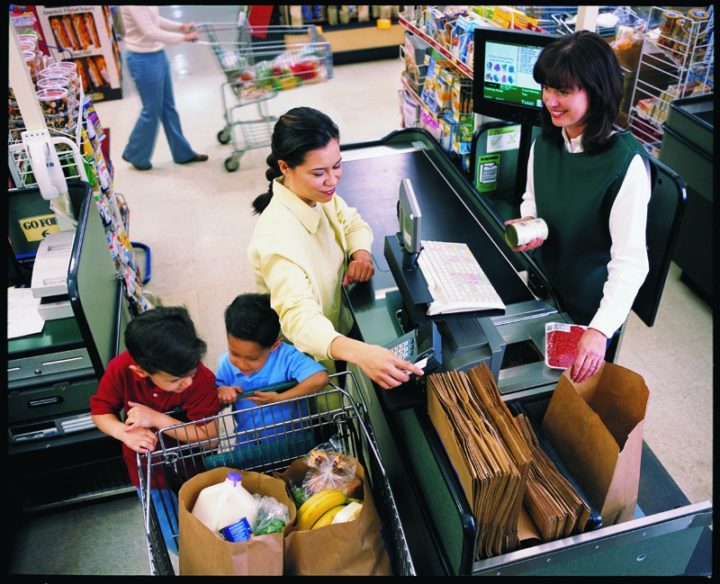Every savvy shopper knows that using coupons and looking for deals can help you save money on your groceries. But as millions more Americans are now receiving government assistance to help pay for their groceries, a new report says many of these shoppers – the ones who could most benefit from coupons and deals – are less likely to take advantage of them.
The report from the market research firm IRI focuses on SNAP recipients – participants in the Supplemental Nutrition Assistance Program, the successor to the former Food Stamp Program. According to the latest data from the U.S. Agriculture Department, eight million more Americans began receiving benefits during the coronavirus pandemic, bringing the total number of recipients to 44 million individuals. IRI says those shoppers spent a total of $74 billion on groceries last year – representing 12% of total sales. So they’re a significant segment of the shopping population that retailers can’t take for granted.
You might think SNAP shoppers would want to stretch those dollars by using coupons and seeking out items that are on sale. But IRI says SNAP shoppers are actually less likely to take advantage of price promotions than the average non-SNAP recipient is.
Among shoppers making more than $100,000 a year, IRI found that 23% of all grocery items are sold on promotion, either while it’s on sale or when the shopper uses a coupon. But that percentage declines as income levels go down – at the bottom of the scale, among those making $15,000 a year or less, just 16% of groceries are sold on promotion.
“SNAP shoppers are not as deal-driven,” IRI notes, suggesting that “lower income households buy on need and can’t wait for a sale.” But anyone can clip coupons – so why not do that?
A 2018 research report found that the reason more SNAP recipients don’t use coupons is part economics, part psychology. First, gaining access to coupons can cost money that some shoppers simply can’t spare – you need to buy a newspaper to get Sunday coupon inserts, for example, and you need internet access, a computer or a smartphone to access digital coupons. Psychology comes into play when some SNAP recipients subliminally treat their benefits like “free money” and aren’t as inclined to spend it as wisely as they otherwise would. “It may be that with an enlarged mental food budget, households cut back on bargain-hunting when they are buying food,” one of the researchers explained.
One thing SNAP recipients still do more than most others, IRI found, is shopping at stores that offer everyday low prices, like Walmart and dollar stores. SNAP purchases represent 17% of all sales at big-box stores like Walmart, and 28% of all sales at dollar stores. So SNAP recipients aren’t necessarily spending unwisely – they’re just focusing their efforts not on clipping coupons or looking for deals, but going where they can find the lowest prices.
And that’s where a store like Dollar General, IRI says, is doing it right – attracting more of those SNAP dollars, by offering more deals that SNAP recipients are responding to. Instead of focusing on a weekly sales circular filled with deals on items that won’t be on sale again for another month or two, or offering coupons for specific items that won’t figure into a cash-strapped shopper’s budget, Dollar General’s success with SNAP shoppers “can be tied to the type of promotions offered before shoppers get to the store,” such as coupons offering $5 off a purchase of $25 or more, IRI points out.
So, IRI concludes, that’s one of the ways stores can make more money from SNAP recipients – and SNAP recipients can save more money when buying their groceries. IRI is encouraging retailers to promote their everyday low prices, and offer relevant deals that SNAP shoppers can take advantage of. “10 for $10” deals and “buy one get one free” offers may appeal to shoppers who have the spending money to stock up, but they’re unlikely to attract SNAP shoppers who can’t always afford to buy now in order to save later.
The average monthly SNAP benefit per household last year was about $246 a month. And that money can go fast when you’re trying to feed a family. Coupons and weekly sales may not always be the best way for SNAP recipients to save. But stores that want to earn their share of the $74 billion that SNAP shoppers spent last year, are the ones who recognize that for SNAP recipients trying to buy as much as they can for as little as possible – every dollar counts.
Image source: USDA
















